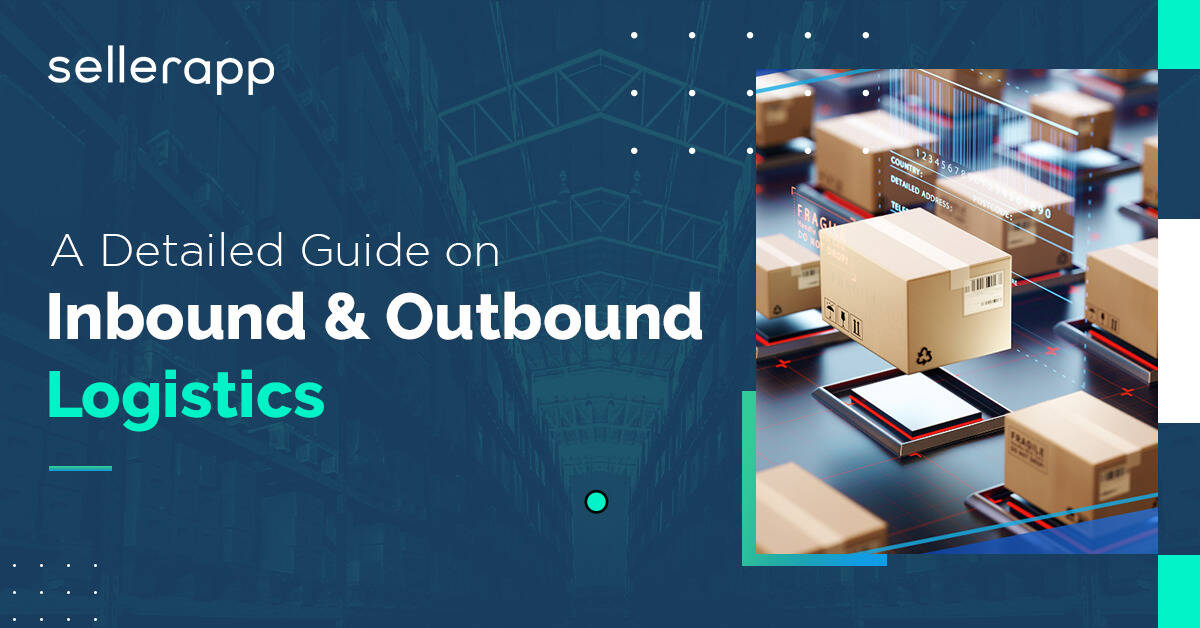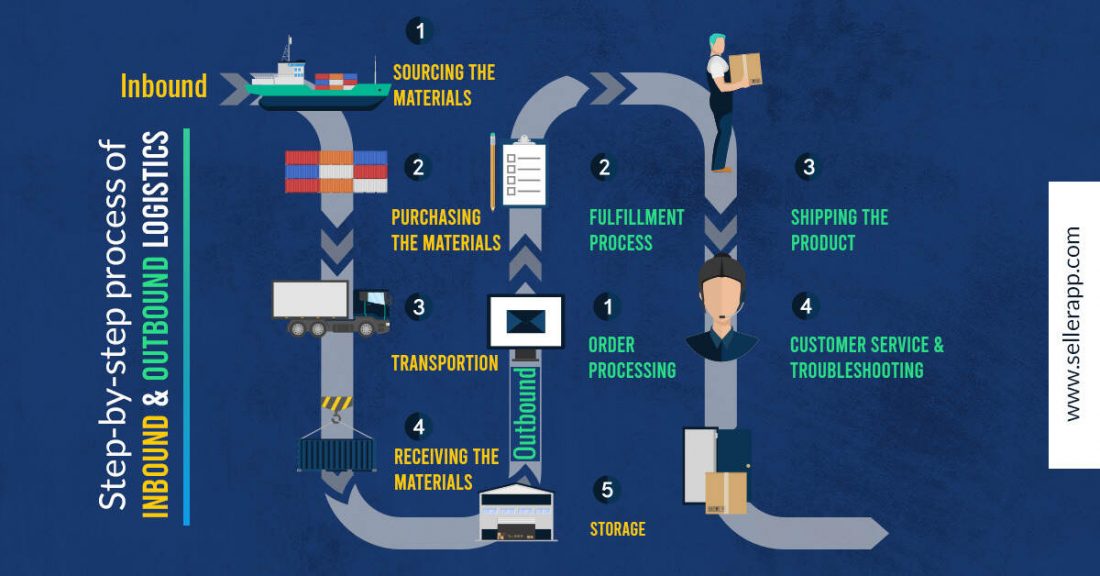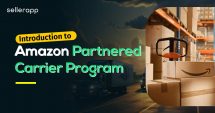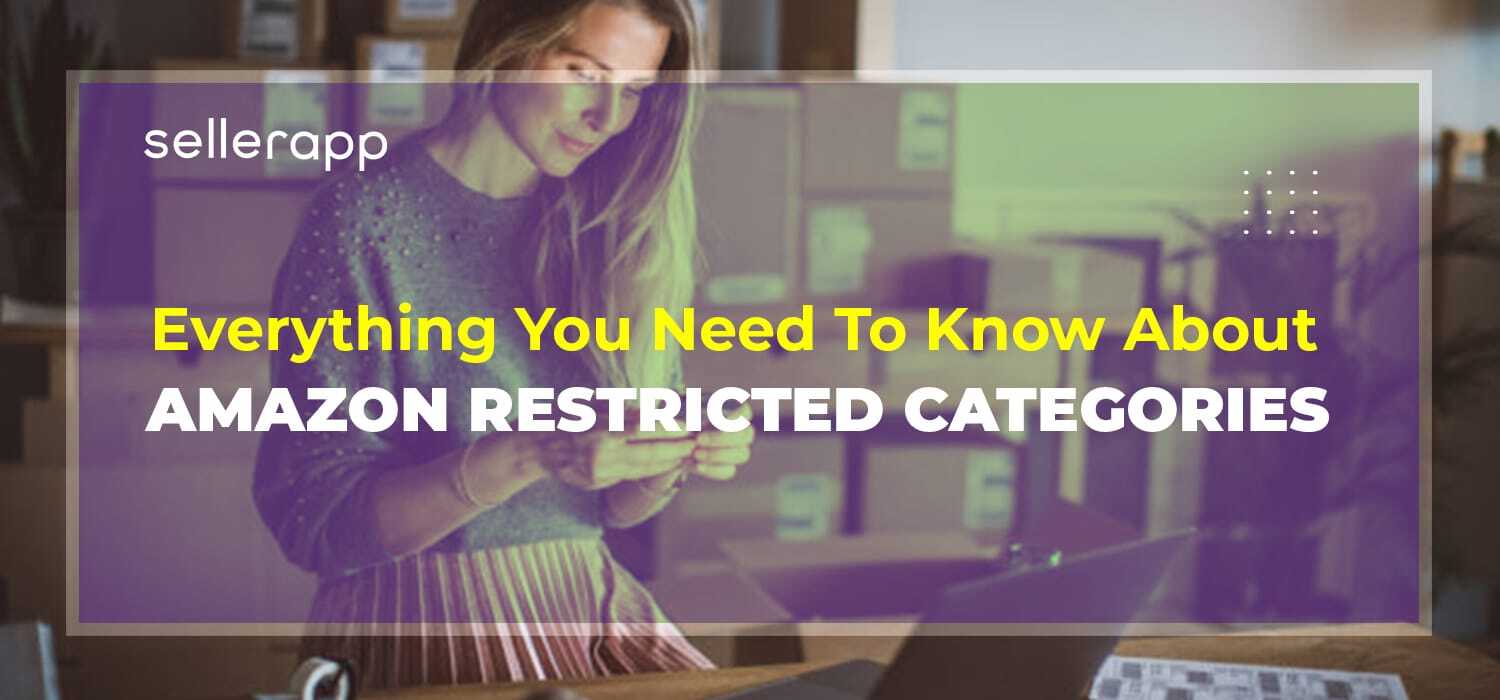Master Inbound and Outbound Logistics to Gain a Competitive Edge

If you want to master your supply chain, your inbound and outbound logistics should work in tandem.
In today’s eCommerce business world, logistics is an essential part of operations.
Whether you’re managing a small startup or a large corporation, understanding and mastering the inbound and outbound logistics of your business can make a huge difference in your success.
In this article, we’ll provide a detailed guide on inbound and outbound logistics, discussing the differences between the two, the strategies and processes used, and the benefits of each. We’ll also provide advice on how to optimize your logistics processes, as well as some tips on setting up an effective logistics team.
So let’s get started.
Quick Guide
- What are Inbound and Outbound Logistics
- Examples of inbound and outbound logistics
- What is the difference between inbound and outbound logistics?
- Benefits of having effective inbound and outbound logistics
- Step-by-step process of inbound and outbound logistics
- The key KPIs to track your inbound and outbound logistics
- Five challenges of inbound and outbound logistics
- How to optimize your inbound and outbound logistics
- Wrapping it up
What are Inbound and Outbound Logistics
Inbound and Outbound logistics refer to two of the familiar procedure to move goods throughout the retail supply chain.
At the surface, they appear to be the same as both processes involve the transportation of the products across different channels.
However, the key difference is that inbound deals with supply, while outbound deals with fulfillment.
Inbound
Inbound logistics is all about raw materials, finished goods or supplies, etc.
The process of receiving and storing materials for use in production. It is a part of the supply chain which involves the movement and storage of incoming goods from their point of origin to the point where they are needed. This includes activities such as receiving, warehousing, handling, tracking, and inventory management of incoming goods.
Inbound logistics also involves the coordination of freight transportation from suppliers, which may include air, sea, and ground. Companies need well-defined inbound logistics processes to ensure that the right materials are received in the right quantity and quality.
Inbound logistics examples
Let’s take the example of the inbound logistics of an apparel company, Zera Dress Co.
Here are a few common steps they need to take as part of their inbound logistics.
- The Zera Dress company should initially recognize the raw materials like fabric, thread, zipper, buttons, etc.
- The team works with the designers to find each supplier that can give the materials that meet the company’s needs like price, color, etc.
- The purchasing department negotiates and comes into contact with the suppliers. In the end, they purchase the materials that are needed.
- The suppliers have to transport the materials to the warehouse where the receiving department should check the quality and quantity of the goods.
- Now the team needs to organize, store, and protect the inventory in a secure place.
Outbound
Outbound logistics is the process of moving inventory out of storage. In this case, you move finished products from a production or distribution center to the end consumer. Integrating warehouse automation technology into this process can significantly enhance efficiency, reducing manual errors and speeding up order fulfillment.
It includes inventory control, order fulfillment, packaging, shipping, and delivery.
Outbound logistics also includes the coordination and management of resources such as transportation, suppliers, and customers. This is critical for businesses to ensure the timely delivery of products and services to their customers. This is especially true in industries such as e-commerce, where timely delivery of goods is essential to customer satisfaction.
Outbound logistics is a complex process that requires careful planning and execution to ensure a successful outcome. By optimizing the outbound logistics process, businesses can reduce costs, improve customer satisfaction, and increase their profits.
Outbound logistics examples
Let’s take the same example of Zera Dress Co.
The outbound logistics starts with processing the order. So once the company is ready with its product. The products are listed on their eCommerce marketplace. The company collects all the orders they have got.
Then the workers move the product from the remote storage to the shipping warehouse. The warehouse staff picks the products for multiple orders. The staff members then pack the products in carefully so that it doesn’t get damaged. Once all the products are fulfilled, the next is shipping the product.
The company can use any means of freight transportation and in the end, it should be received by the end customer.
What is the difference between inbound vs. outbound logistics?
Inbound and outbound logistics aim to fulfill different things. Here is a comparison table that will show the difference between inbound and outbound logistics in simple terms.
Inbound Logistics vs. Outbound Logistics
| ATTRIBUTES | INBOUND LOGISTICS | OUTBOUND LOGISTICS |
|---|---|---|
| Focus | Supply | Demand |
| Responsibility | Receiving | Delivering |
| Handling | Inward | Outward |
| Procedure | Sourcing, purchasing, transport, receiving | Order processing, fulfillment, shipping, customer service |
| Strong relation with | Suppliers, manufacturers, distributors, and product holders | Company, brand, retailers, end customers |
| Task | Raw materials or goods from suppliers | Finished products going out to customers |
| Key objectives | Collecting materials or goods the company needs to make its products | Fulfilling the customer demand, supporting the sales process to generate revenue |
Benefits of having effective inbound and outbound logistics
Inbound and outbound logistics are crucial for the successful operation of any business. Efficient inbound and outbound logistics help a business to effectively manage its supply chain, which in turn can improve its overall performance.
Improved Flow of Goods
Effective inbound and outbound logistics help to improve the flow of goods. Inbound logistics help to ensure that the goods and materials required are received on time and in the right condition. With this, you can reduce delays and ensure that the right goods are available when needed.
Outbound logistics help to ensure that goods are delivered on time and in the right condition.
Increased Inventory and Order Accuracy
Inbound and outbound logistics help to ensure that inventory levels are accurately tracked and orders are accurately fulfilled. Mistakes should be less likely to happen. Effective inbound logistics ensures you receive goods without any damage or missing. This helps to ensure that:
- Inventory levels are accurately tracked,
- Orders are accurately filled,
- And Orders are delivered on time.
Optimized Speed of Delivery
Inbound logistics helps to shorten lead times and ensure that goods are available when needed. Outbound logistics help to ensure that orders are fulfilled faster. This helps to ensure that orders are delivered on time to the end customer. Quick delivery can delight the customer and provide a good advantage to the business.
Maximized Sales and Revenue
Quality inbound and outbound logistics can increase sales. Inbound logistics help to ensure that the right goods are available when needed.
On the other hand, outbound logistics help to ensure that orders are fulfilled quickly and accurately. This helps to reach the customer’s expectations, and they will be encouraged to purchase again.
Recommended read: What is Amazon FBA small and light?
Reduced Cost
A well-managed inbound and outbound logistics can save the business. If the logistics are working well, the cost-effectiveness to run also increases because they would need fewer hours of labor.
A good logistic system wouldn’t lose inventory and would always save the business a retrospective cost.
The step-by-step process of inbound and outbound logistics

Inbound logistics process
Here is the step-by-step process of the inbound logistics
Sourcing materials
This is the first step in the inbound logistics process. It involves identifying suppliers and selecting the right sources for the raw materials. Companies need to ensure that they select reliable suppliers that can provide quality materials on time. This includes researching suppliers, negotiating prices, and establishing relationships with them.
Purchasing materials
The second step involves ordering the required materials from the selected suppliers. Companies need to ensure that they purchase the right materials in the right amount and at the right price. This includes specifying the exact quantity, quality, and cost of materials needed.
Transporting materials
The third step in the inbound logistics process involves transporting the materials from the suppliers to the company’s warehouses or other facilities. Companies must ensure that they select the most efficient and cost-effective modes of transport. This includes selecting the right freight transportation, and carriers.
Receiving the materials
Brands should receive the materials at their company’s warehouses. They need to inspect the materials for any damages or defects and confirm the quantity, and quality of the materials.
Storage
Companies need to ensure that they store the materials in an organized manner and in a secure location. This includes organizing the materials, using the right storage systems, and ensuring that the materials are secure and protected.
Reverse logistics
It is a type of supply chain management that will move the goods from the customer back to the sellers or manufacturers.
Companies need to ensure that they have a system in place to handle the return of materials. This includes having a process for returning materials, ensuring that the materials are returned unopened or in good condition, and negotiating with suppliers to ensure that the returns are accepted. If it is returned in a bad condition, then the warehouse team should make sure to move it out of the warehouse.
Outbound Logistics Process
These are the step-by-step process of outbound logistics
Order Processing
The first step in outbound logistics is to process the order.
You need to:
- Collect the orders
- Identify the items
- Generate invoice for the customer
The order information is then sent to the supplier for fulfillment. In many cases, the supplier may have an automated system for order processing. This system may allow for the tracking of orders and the ability to provide customers with status updates. It may also allow for monitoring inventory levels to ensure that orders can be filled promptly.
Fulfillment process
This step involves the actual fulfillment of the customer’s order. The supplier will receive the order and should begin the process by picking the product from the inventory location.
Depending on the supplier and their methods, this process can be manual or automated. If manual, the supplier will need to pick the items, pack them, and ship them to the customer. If automated, the supplier may use a third-party solution that allows them to quickly and accurately fulfill orders.
Shipping the products
Once the order has been fulfilled, the supplier must ship it to the customer. This typically involves selecting a shipping method, such as ground, air, or ocean freight. The supplier must also ensure that the items are properly packaged for shipment.
Customer Service and Troubleshooting
Once the order has been shipped, the companies must provide customer service and troubleshooting. This includes providing status updates on orders and assisting customers with any issues that arise.
The supplier must also ensure that the customer receives their orders on time. In some cases, the supplier may need to assist with product returns or replacements. This is especially important for e-commerce businesses, as customers may not always receive the item they ordered.
The key KPIs to track your inbound and outbound logistics
Logistics Key Performance Indicators (KPIs) are metrics used to evaluate the performance of inbound logistics operations. These metrics measure the efficiency, effectiveness, and cost-effectiveness of a company’s supply chain and transportation activities.
The most common KPI you should track in inbound logistics is
Inventory Turnover:
This metric tracks the number of times inventory is replaced or sold over a given period, indicating how well the inbound logistics process can supply the necessary products when needed.
Freight Cost as a Percentage of Total Cost:
This KPI measures the total cost of transportation as a percentage of the total cost of goods sold. This provides valuable insight into the efficiency and effectiveness of the inbound logistics process.
Lead Time:
This measures the amount of time it takes for an order to be processed and shipped, providing a measure of the speed and responsiveness of the inbound logistics process.
The most common KPI you should track in outbound logistics is
On-Time Delivery:
This measures the percentage of outbound shipments delivered on time to the customer. Achieving a high on-time delivery rate is essential to ensure customer satisfaction and loyalty.
Cost per Shipment:
This metric measures the cost of each shipment from the warehouse to the customer. This is a key metric for understanding the efficiency of outbound logistics operations, as it provides insight into the cost of the overall supply chain.
Order Accuracy Rate:
This measures the accuracy of orders in terms of both quantity and content. Ensuring accurate orders is essential for customer satisfaction, as it reduces the number of returns and refunds.
Customer Order Cycle Time:
This KPI measures the time from when an order is placed to when it is delivered to the customer. Achieving fast cycle times is essential for providing a good customer experience.
Returns:
This measures the rate of returns from customers. A high rate of returns indicates that the product quality or customer experience is not meeting expectations.
By monitoring these KPIs, companies can adjust their logistics process to ensure they are providing the best possible customer experience.
Five Challenges of inbound and outbound logistics
Difficulties with Quality Control
Quality control is one of the most important aspects of inbound and outbound logistics. Quality control is the process of preventing errors and defects in the products, processes, and services that are provided to customers.
It includes issues with the quality of the product, the packaging, the labels, and the transportation process. Poor quality control can lead to customer dissatisfaction, lost revenue, and even legal complications in some cases.
Reduced Visibility into Transportation Operations
When it comes to inbound and outbound logistics, it’s important to have visibility into the transportation operations. This visibility helps ensure that the goods are transported in the most efficient manner possible. Without visibility into transportation operations, it can be difficult to manage delays, and anticipate problems. So make sure that the goods are delivered on time.
Prolonged Lead Times
Lead time refers to the amount of time it takes for a product to be manufactured, packaged, and shipped to its destination. Long lead times can result in customer dissatisfaction and lost revenue. To reduce lead times, companies must ensure that their suppliers are capable of delivering the goods on time and that their processes are efficient and optimized.
High Costs
The cost of inbound and outbound logistics can be extremely high. This is due to the cost of transporting goods can be significant, and the cost of storing and managing inventory can also be expensive. To reduce costs, companies must ensure that their processes are optimized and that they are taking advantage of cost-saving opportunities.
Inventory and Fulfillment Accuracy
Inventory and fulfillment accuracy are essential for inbound and outbound logistics. If the inventory is inaccurate, it can lead to delays and customer dissatisfaction. Additionally, companies must ensure that their fulfillment processes are accurate and reliable. Also, mistakes can lead to big problems for a business, especially when these are left unchecked.
How to optimize your Inbound logistics
Here are some best tips to optimize your inbound logistics.
1. Reduce inventory costs
Inventory costs are one of the most important aspects of inbound logistics. Reducing inventory costs is a process improvement that can be achieved by utilizing just-in-time inventory management.This means that stock is only ordered when it’s needed, rather than having it stored in the warehouse. This helps reduce the amount of money spent on storage and handling.
2. Optimize stock levels
Stock levels should be optimized to ensure that the right products are always available when they are needed. You can do this by using data analysis and forecasting to determine what products are most in demand and when they need to be restocked.
You also need to improve your demand forecast, as future prediction can help your business stock up on the SKUs that would be sold.
3. Use the right Warehouse Management System (WMS)
The WMS helps to automate and optimize the process of inbound logistics. It helps to ensure that the right products are always available, inventory is not overstocked, and orders are processed quickly and efficiently. A WMS can also help to reduce the time and effort spent on manual processes, such as inventory control and order processing.
4. Build a partnership with a 3PL
Partnering with a 3PL (Third Party Logistics) company can also help to optimize inbound logistics. A 3PL is a company that specializes in managing and coordinating the movement of goods from suppliers to customers. They can provide a range of services, such as inventory management, order fulfillment, warehousing, and logistics planning. This can help to streamline the process of inbound logistics and ensure that orders are handled efficiently.
How to optimize your outbound logistics
1. Building strong relationships
Robust relationships are key to successful outbound logistics. You should build strong relationships with your shipping carriers, 3PL, and freight partners to ensure a timely, efficient, and cost-effective flow of goods. As part of your relationship-building process, you should also identify potential problems and develop strategies to address them. In addition, building relationships can help you reduce lead times, and save money.
2. Reduce transit time
Longer transit times can lead to delays, which can affect the timely delivery of goods. To reduce transit time, you should analyze the current shipping routes and identify any inefficiencies. You should also identify the fastest and most cost-effective shipping routes. In addition, you should look into alternative shipping options such as air freight or express shipping.
3. Introduce automation
Automation can help to reduce costs and improve efficiency by streamlining and standardizing processes. Automation can be used to track shipments, manage inventory, and automate communication with suppliers and carriers.
In addition, these systems can help to ensure that shipments arrive on time and that goods are delivered to the correct destination. Besides, automation can also help to reduce the manual labor errors involved in outbound logistics. You should check out a few logistics software options before you select an automation tool for your business.
Wrapping it up!
Inbound and Outbound Logistics are essential components of any successful supply chain. Inbound logistics involves the efficient and cost-effective flow of materials and goods into a business, while outbound logistics involves the efficient and cost-effective flow of goods and services out of it.
Understanding the nuances of these logistics, and being able to efficiently manage them, can help businesses to increase their efficiency and reduce costs. With the help of this guide, you should now have a better understanding of inbound and outbound logistics and how to best manage them.
Additional Read:
Additional Read:
Eliminating Counterfeit Goods: How Amazon Project Zero is Changing the Game.
What are Fast-Moving Consumer Goods (FMCG)?
Strategies to Minimize Amazon FBA Inbound Placement Fees











Weston
January 20, 2023Your blog provided us with valuable information to work on. You have done a marvelous job!
Mouni
January 20, 2023Great Post, Thanks for sharing this amazing blog.
Ravi
January 20, 2023Thank you for the information. It helped a lot.